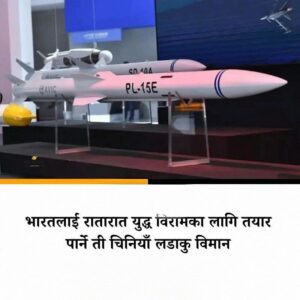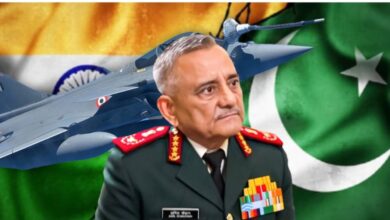J-10C Wrote History, Surprised the World!

#By Prem Sagar Poudel
The latest conflict between India and Pakistan has taken an extraordinary turn, and China stands at the center of that turn. Although the direct participants in the war were India and Pakistan, the main reason this conflict captured the world’s attention was the unexpected success of the Chinese-made J-10C fighter jet.

This event not only turned the flow of a war, but also redefined China’s defense technology, self-reliance, and its presence in the global arms market.
Pakistan is the only country outside China that is using the J-10C. This 4.5 generation jet fighter is based on a modern design concept, and is loaded with features like active electronically scanned array (AESA) radar, beyond-visual-range missile (BVRAAM), and supersonic cruise capability. But the tricky question was, would the paper description be just as effective in a real war? The practical answer came—clearly and powerfully. According to reports, Pakistan has managed to shoot down two Dassault Rafale jets, and the J-10C was used in them. This is not just a war casualty for the world, but also a challenge to the reliability of the French state-of-the-art jet.

China has dramatically expanded its defense industry in the past decades. But the Western world had still viewed “Chinese-made” war technology with suspicion. But this battle has given proof of how reliable and effective Chinese-made military hardware can be on the battlefield. Particularly, it aligns with China’s own strategic goals, sending a message that “Made in China” can now not only produce, but also perform.
The direct benefit of the J-10C’s success will be in China’s arms export sector. Several countries, including Egypt, are already showing interest in purchasing it. Actual combat results will strengthen that confidence. Now the world is moving towards the sixth generation of warfare. China itself is also producing fifth and sixth-generation jets through its FC-31 project. This will stand China as an innovative producer, not just a consumer.
However, in recent years, drones and cyber warfare have added new layers to the military balance. Fighter jets are still powerful enough to be an indicator of a nation’s air power and geopolitical influence. Therefore, the success of the J-10C is not just a strategic victory, but a strong signal of China’s long-term strategic self-confidence, technological maturity, and global influence.
The successful use of the J-10C and the fatal loss of the Rafale are a revolutionary moment. Where China has declared its strong presence not only on the battlefield, but also in the global balance of defense technology.
This victory of China is not only for Pakistan, but for the confidence of the entire Eastern world. Now, in the manufacture and use of weapons, China has given signs of its ability to do guidance, not just imitate.








